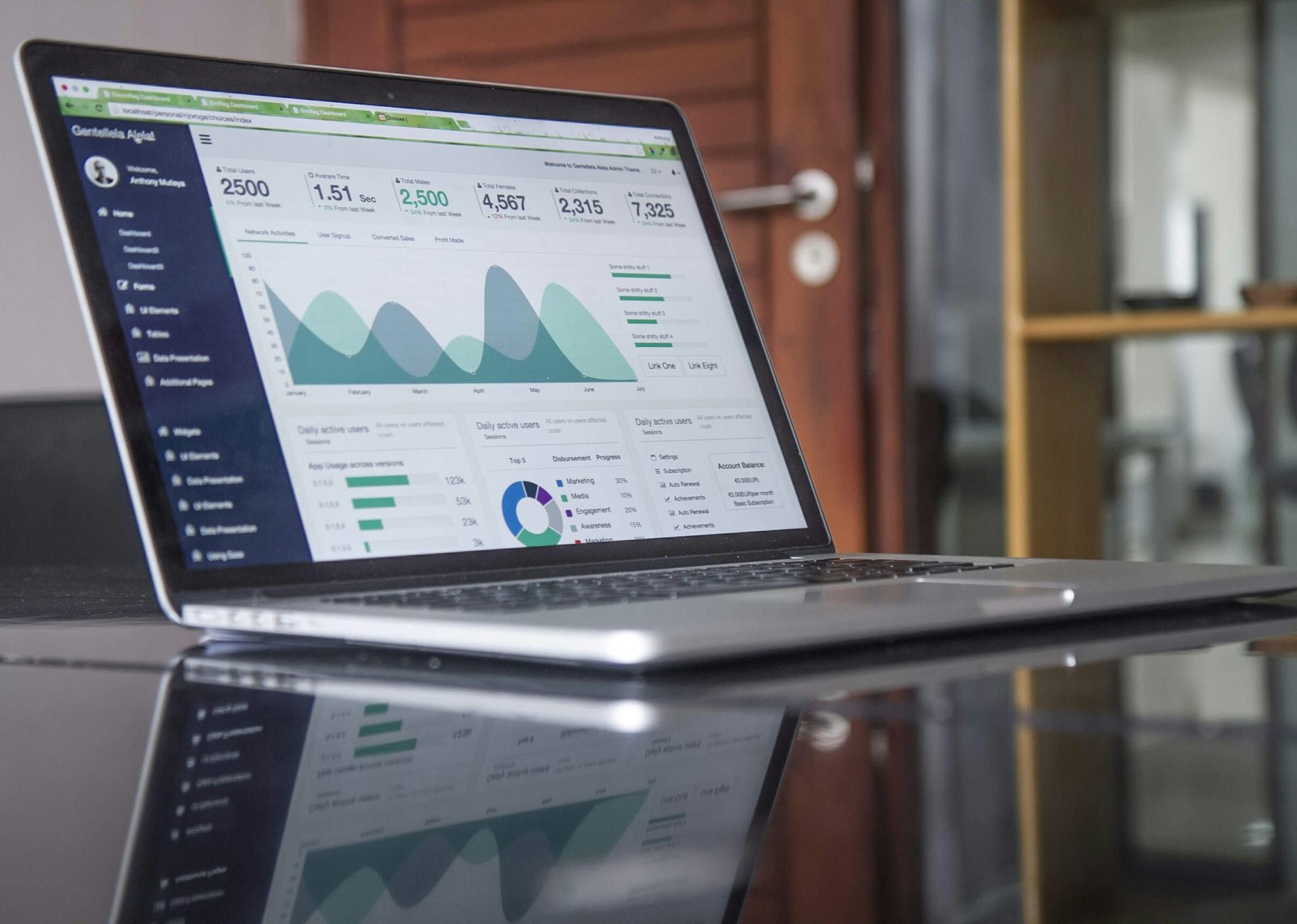Understanding B2B Professional Services Lead Generation
B2B professional services lead generation refers to the process of identifying and attracting potential clients who are interested in professional services offered by businesses such as consulting, legal, accounting, and marketing firms. This is a critical practice for businesses within the professional services sector, as it directly impacts their ability to grow and maintain a healthy client base. Unlike business-to-consumer (B2C) lead generation, which often focuses on shorter sales cycles and emotional appeals, B2B lead generation typically emphasizes building long-term relationships and fostering trust, given the complex nature of business transactions.
One of the distinguishing characteristics of B2B professional services lead generation is the lengthier decision-making process involved. Prospective clients take the time to evaluate services, compare multiple offerings, and often consult with internal stakeholders. Additionally, the audience in this space is usually comprised of decision-makers and influencers who require tailored content that addresses specific business needs and pain points. This necessitates a deeper understanding of the audience, ensuring that the messaging speaks directly to their requirements and operational challenges.
In this context, professional services firms face unique challenges in their lead generation efforts. High competition in the market necessitates that these firms not only differentiate themselves based on service quality but also demonstrate expertise and thought leadership. Moreover, the intangible nature of professional services can make it difficult to communicate value to potential leads effectively. Consequently, businesses must employ strategic methods to highlight how their offerings can resolve client issues or improve their operations, thereby fostering interest and engagement.
Establishing an effective B2B professional services lead generation strategy is essential for success in this sector, as it lays the groundwork for subsequent marketing and sales initiatives. Understanding the nuances of this approach sets the stage for exploring optimization methods that can elevate lead acquisition and conversion rates.
Current Trends in Lead Generation for Professional Services
The landscape of lead generation in the professional services sector has undergone significant transformation in recent years, primarily due to advancements in technology and the evolving preferences of potential clients. One of the most prominent trends is the rise of digital marketing, which has changed how firms reach their target audience. With an increased focus on online visibility, professional services firms are leveraging SEO, content marketing, and targeted digital advertising to attract potential clients. This shift not only broadens the reach but also enables more precise targeting through data analytics.
Another critical trend shaping lead generation is the implementation of account-based marketing (ABM). ABM allows firms to tailor their marketing efforts towards specific high-value accounts rather than employing a generalist approach. By concentrating resources on key prospects, professional services organizations can enhance their engagement strategies, ultimately leading to higher conversion rates. This personalized approach is proving especially beneficial in establishing long-term relationships and improving client retention.
Additionally, the integration of artificial intelligence (AI) tools in lead generation processes is becoming increasingly prevalent. AI technologies can analyze vast amounts of data to identify potential leads, predict client behavior, and provide insights that inform more effective strategies. For instance, predictive lead scoring can help professional services firms prioritize prospects likely to convert, thus optimizing their sales efforts.
The role of social media platforms is also pivotal in current lead generation efforts. Professional services firms are harnessing platforms such as LinkedIn and Twitter to engage with their audiences, share valuable content, and build their brands. These platforms not only serve as channels for promoting services but also as venues for thought leadership and networking, further amplifying lead generation potential.
In summary, the contemporary trends in lead generation highlight the importance of digital strategies, personalization through account-based marketing, the use of AI, and effective social media utilization for professional services firms aiming to optimize their lead generation. Recognizing and adapting to these trends is essential for success in the competitive marketplace.
Setting Clear Objectives and KPIs
Establishing clear objectives is paramount in optimizing your B2B professional services lead generation strategy. Clear goals provide a foundation for measuring success and align your efforts with the overarching business objectives. It is essential to define what success looks like in terms of lead generation; therefore, organizations must look beyond merely increasing the number of leads to understanding the quality and conversion potential of those leads.
When setting objectives, it is advisable to follow the SMART criteria: ensuring that goals are Specific, Measurable, Achievable, Relevant, and Time-bound. For example, instead of aiming for “more leads,” a better objective might be “to increase the number of qualified leads by 25% within the next quarter.” This specific target will enable your team to focus their efforts appropriately and allows for easier evaluation of performance.
Key Performance Indicators (KPIs) are critical in this context as they provide a means of gauging the effectiveness of the lead generation processes implemented. Common KPIs to consider include client acquisition rates, conversion ratios, and the average time taken to convert leads into clients. Monitoring these indicators consistently can reveal patterns that inform decision-making. Adjustments to strategies can be made based on which activities yield the highest return on investment. For instance, if data shows that personalized email campaigns lead to higher conversion rates than social media ads, reallocating resources can amplify success.
In conclusion, setting clear objectives and identifying suitable KPIs serves as the groundwork for evaluating a lead generation strategy’s success within the B2B professional services sector. A focus on thorough planning and metric analysis can lead to more informed strategies, better resource allocation, and ultimately, improved business performance.
Creating Targeted Buyer Personas
Developing targeted buyer personas is a critical element in enhancing your B2B professional services lead generation strategy. Buyer personas represent detailed profiles of your ideal clients, based on data and insights collected from existing customers and market research. The creation of these personas begins with gathering data about your current clients. This includes demographic information, purchasing behavior, and pain points that your services address. By analyzing this data, you can identify patterns and commonalities among your clients, which serve as a foundation for building effective buyer personas.
Market research is equally important in understanding the wider landscape in which your business operates. Utilizing surveys, interviews, and industry reports can yield valuable insights into the motivations, challenges, and desires of potential clients. Engaging with prospects through social media and online forums can also reveal their problems and the characteristics that are most appealing to them. This multi-faceted approach ensures a comprehensive understanding of your audience, leading to more nuanced personas.
Once the data is collected, the next step involves segmenting it into distinct groups that share similar traits, challenges, and goals. Each group can then be represented by a buyer persona that encapsulates these characteristics. These personas should be as detailed as possible, including not only demographic data but also insights into their motivations and decision-making processes. With clearly defined personas, your marketing and lead generation efforts can be more focused and personalized.
Personas guide communication strategies and enable you to tailor messaging that resonates with specific audience segments. By aligning your content and outreach efforts with the needs and preferences of your targeted personas, you can increase the likelihood of engaging qualified leads. This ultimately facilitates a more effective lead generation strategy for your professional services, setting the stage for successful conversions and long-term relationships.
Leveraging Content Marketing for Lead Generation
Content marketing plays an indispensable role in the landscape of B2B professional services lead generation. By creating and disseminating valuable, relevant content, businesses can not only attract potential leads but also engage them effectively throughout the buyer’s journey. Various forms of content, including blogs, case studies, whitepapers, and webinars, serve to demonstrate expertise, answer pertinent questions, and address the unique challenges faced by potential clients.
Blogs, for instance, are an excellent means to share insights and industry trends, fostering a connection with readers. By incorporating targeted keywords and topics that resonate with the audience’s needs, businesses can enhance their visibility and drive organic traffic from search engines. Furthermore, each blog post can serve as a gateway to deeper content, guiding leads toward case studies or whitepapers that substantiate claims and provide evidence of success.
Case studies and whitepapers offer in-depth information that highlights past accomplishments and methodologies, which can build trust and credibility with prospects. These pieces not only illustrate successful implementations of services but also delve into challenges and solutions, enabling potential leads to envision how the service could address their specific issues. Additionally, hosting webinars provides an interactive platform to engage directly with interested individuals, allowing for real-time feedback and discussion.
However, creating great content is only half the battle. Effective distribution strategies are paramount. Leveraging email marketing, social media channels, and partnerships with industry influencers can amplify reach and garner attention from the right audience. Utilizing SEO techniques ensures that content is not only engaging but also easily discoverable by those searching for services in your niche. An optimized lead generation strategy that integrates these content marketing elements can significantly elevate a B2B professional service’s visibility and conversion metrics.
Utilizing Social Media to Enhance Lead Generation
In today’s digital landscape, social media has emerged as a pivotal tool for professional services firms looking to optimize their lead generation strategies. With an array of platforms available, firms can engage with potential clients and industry peers effectively while promoting their services and expertise.
One of the most effective platforms for B2B lead generation is LinkedIn. This professional networking site enables firms to connect with decision-makers, showcase their industry knowledge, and build a robust network. A well-optimized LinkedIn profile is essential; it should clearly communicate the firm’s value proposition and expertise. Regularly sharing insightful articles, case studies, and engaging posts can establish the firm as a thought leader in the industry, attracting prospects who are looking for credible professional services.
Engagement is crucial on social media. Firms should actively participate in discussions relevant to their sector, responding to comments and messages promptly. This interaction builds rapport with potential clients, enhancing trust and credibility. Furthermore, understanding the nuances of different platforms is vital. For instance, Twitter may be used for real-time conversations and updates, while Facebook and Instagram can showcase the firm’s culture through behind-the-scenes content. Each platform has its strengths, and tailoring content accordingly can yield better engagement and lead generation outcomes.
Creating shareable content is another key strategy. Infographics, webinars, and video content can significantly boost visibility and engagement. When users share these resources, it expands the firm’s reach and attracts new leads. Consistency in posting is also essential; developing a content calendar can ensure regular engagement and help maintain top-of-mind awareness among potential clients.
Ultimately, effective branding on social media cannot be overlooked. A cohesive visual identity and messaging across all platforms not only helps in recognizing the brand but also reinforces its professional image. By leveraging these strategies, professional services firms can significantly enhance their lead generation efforts through social media.
Nurturing Leads through Email Marketing
Email marketing plays a pivotal role in nurturing leads throughout the buyer’s journey in the B2B professional services sector. By employing strategic email campaigns, businesses can maintain consistent communication with potential clients, guiding them from awareness to decision-making stages. One of the essential strategies for successful email marketing is segmenting email lists. This process involves categorizing subscribers based on criteria such as demographics, firmographics, or engagement levels. By segmenting your audience, you can ensure that your messages are relevant and tailored to each group’s specific needs.
Personalization is another critical aspect of effective email marketing. By addressing recipients by their names and referencing their particular interests or pain points, you can enhance engagement rates significantly. Customized content that resonates with the target audience fosters a sense of connection and relevance, which is imperative for building trust. Moreover, incorporating dynamic content—such as case studies or data tailored to the recipient’s industry—can further elevate the email experience and encourage interaction.
Creating email campaigns that deliver genuine value to prospective clients is fundamental. This can be achieved through informative newsletters, educational resources like whitepapers, or invitations to webinars. The primary objective should be to provide content that addresses the recipients’ challenges and interests, positioning your services as solutions. Best practices for tracking engagement include analyzing open rates, click-through rates, and conversion metrics. By scrutinizing these performance indicators, businesses can refine their email strategies, identifying which approaches resonate most effectively with their audience.
In conclusion, mastering email marketing for lead nurturing involves careful segmentation, personalized communication, and consistently valuable content. By tracking engagement metrics and adjusting strategies accordingly, B2B professional services can optimize their lead generation efforts, fostering healthier client relationships throughout the entire buyer’s journey.
Implementing Automation and Technology
In today’s dynamic business environment, integrating automation and technology into your B2B professional services lead generation strategy is paramount for enhancing efficiency and maximizing results. The use of Customer Relationship Management (CRM) systems plays a crucial role in managing client interactions and data throughout the lead lifecycle. A robust CRM system enables businesses to track leads systematically, offering insights into their behaviors and preferences, which in turn facilitates more personalized outreach. By automating data entry and follow-ups, CRMs reduce the likelihood of human error and free up valuable time for sales professionals to focus on nurturing relationships.
Marketing automation software offers an additional layer of functionality, allowing businesses to streamline marketing efforts across multiple channels. These tools can automate email campaigns, social media postings, and even landing page creation. By employing marketing automation, organizations can deliver targeted content to potential leads based on their stage in the buyer’s journey. This tailored communication increases engagement, ultimately nurturing leads towards conversion more effectively.
Lead scoring systems also enhance the lead generation process by assigning value to leads based on their engagement levels and likelihood to convert. By categorizing leads according to predefined criteria, businesses can prioritize their outreach efforts, ensuring that sales teams focus on leads with the highest potential ROI. This targeted approach reduces wasted resources and enhances the efficiency of follow-up efforts. Moreover, integrating technological solutions in lead management enables better tracking and analytics, providing actionable insights that inform decision-making and refine strategies.
By effectively implementing these technologies within your lead generation strategy, companies can streamline communications and enhance efficiency, fostering an environment of sustained growth and success.
Measuring and Adjusting Your Strategy
The continuous assessment of your B2B professional services lead generation strategy is vital for its effectiveness and longevity. Establishing a systematic approach to measuring results allows businesses to gauge the efficiency of their endeavors and to adapt as necessary. One applicable method for evaluating campaign performance is A/B testing, which involves changing one variable at a time—such as subject lines, call-to-action buttons, or landing page layouts—to ascertain which version yields superior results. This iterative process enables professionals to enhance their campaigns based on tangible evidence rather than conjecture.
Additionally, leveraging analytics tools plays a crucial role in tracking lead generation metrics. Tools such as Google Analytics, HubSpot, and others offer insights into visitor behavior, conversion rates, and the effectiveness of various channels. By monitoring key performance indicators (KPIs) such as cost per lead, customer lifetime value, and referral sources, organizations can pinpoint strengths and weaknesses in their strategies. Understanding these metrics helps in identifying trends and making data-driven decisions that optimize overall lead generation efforts.
Once data is collected, the next step is to interpret it effectively. Engaging with data visualization techniques can make complex information more accessible and actionable. For instance, dashboards can provide an at-a-glance overview of campaign performance metrics, enabling teams to make quick decisions. It is also essential to conduct regular reviews of both quantitative data and qualitative feedback from leads and clients. This comprehensive examination of results paves the way for informed adjustments that reflect changes in market conditions and evolving client needs.
Ultimately, fostering a culture of continuous improvement ensures that your B2B professional services lead generation strategy remains relevant and competitive in a dynamic environment. Making these adaptations not only enhances performance but can also lead to sustained growth and client satisfaction.



